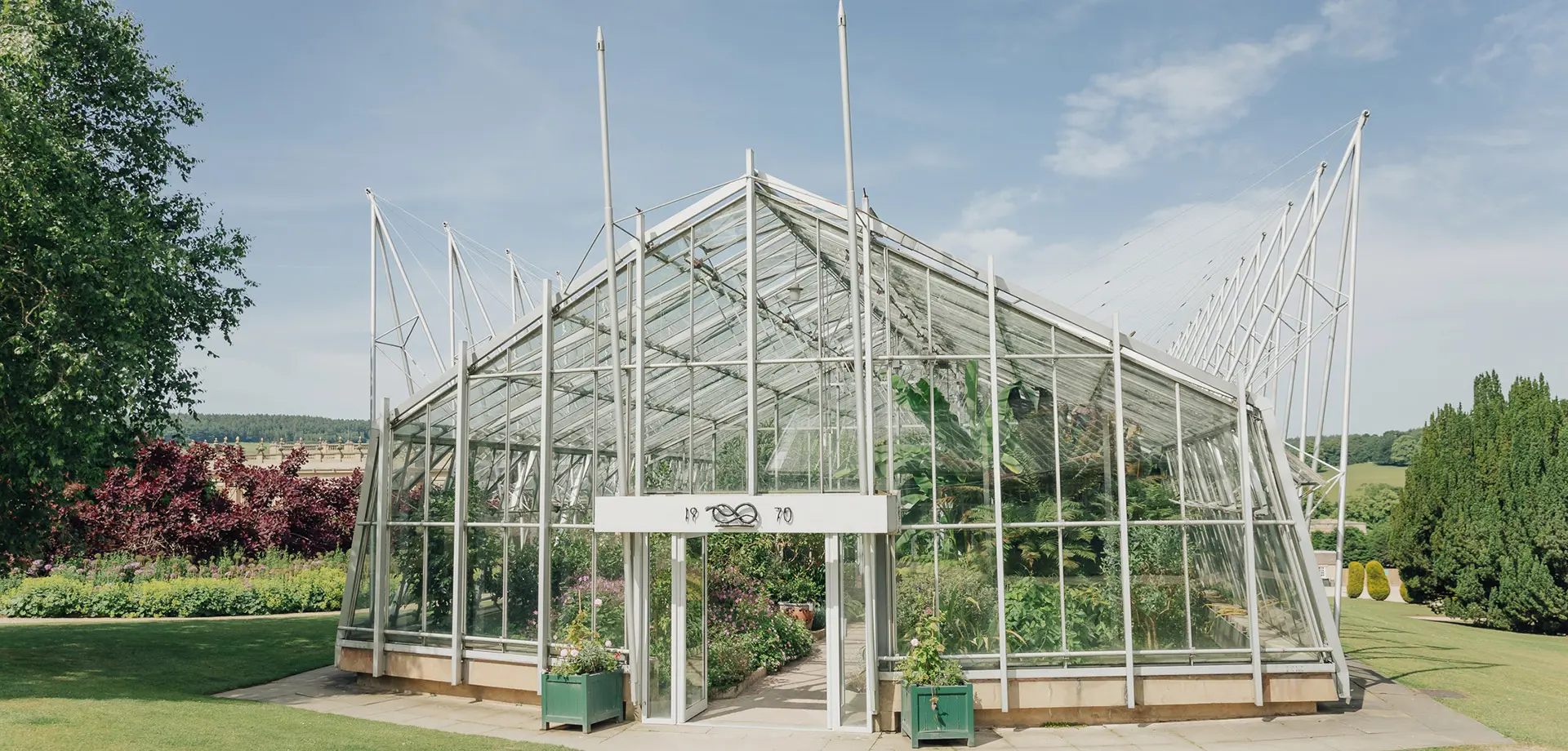In 2011, the temperate and Mediterranean zones were opened to visitors for the first time. The tropical zone is not open to visitors in order to prevent the loss of heat and humidity.
In the temperate zone, which is kept at a minimum of 4°C, we are developing a collection of plants which have been grown at Chatsworth over the past 400 years. Each bed will represent a different era; one bed will represent the period between Bess of Hardwick and the 1st Duke, the second will represent the 6th Duke and Joseph Paxton, the third a small collection of the things the 11th Duke and Duchess built the Display Greenhouse to house, and the fourth will showcase some of the 12th Duke and Duchess’s favourite plants.
The Mediterranean zone, where the minimum temperature is 13-16°C, houses oranges, lemons, limes, and loquats, which thrive here and are used in some of the products found in the kitchens and estate farm shop. There is also a night flowering cactus, Epiphyllum species, which two or three times in summer produces masses of flowers, 30cm across, flowering for just a single night.
In the far left corner of the Mediterranean zone is a Citrus limon Imperial. This is a cross between lemon and grapefruit producing large yellow fruit. The Imperial lemon is used in the house to make marmalade. In 2012, it won first prize in the Miscellaneous Glasshouse Fruit category in the Royal Horticultural Society Autumn Fruit and Vegetable Competition.
In the far corners of the tropical zone (kept at 16°C and above) there are two banana plants, Musa acuminata Dwarf Cavendish, thought to be stock from the original plants Paxton managed to fruit. This was imported from Mauritius in 1829, and it did so well at Chatsworth that Joseph Paxton, the 6th Duke’s head gardener, sent one to a missionary in Samoa where it flourished. It is now grown commercially around the world and more than 7 billion bananas are eaten in the UK every year, the majority of which will be Musa acuminata Dwarf Cavendish. Learn more.
In the central pond is a giant water-lily. Paxton brought one from Kew Gardens, where it had failed to flower. In 1849 he managed to get it to flower for the first time in this country in a specially constructed lily house (now destroyed). It is an annual and still grows at great speed in the pond in the Tropical zone of this greenhouse. Our glasshouse team propagate the lily from seed collected from the previous year’s plants.
Discover more from the modern garden
Ravine and Azalea Dell
In the early 1930s, the 9th Duke’s wife, Evelyn, in collaboration with the head gardener, J. G. Weston, created the Ravine and the Azalea Dell in the south of the garden.
Rose Garden
Originally the French Garden, in 1939 Duchess Mary, wife of the 10th Duke, remodelled this area and it became known as the Rose Garden.
Serpentine Hedges
The Serpentine Hedges were created from an idea of Duchess Deborah's.
The Maze
Originally the site for Paxton's Great Conservatory, this garden is now home to a large yew maze.
Kitchen Garden
Chatsworth has grown its own food for centuries and all manner of fruit, salad, cut flowers and vegetables are grown in the kitchen gardens.
Snake Terrace
In 1974, the Snake Terrace was constructed in the space between the First Duke's Greenhouse and the Display House.
Sensory Garden
The Sensory Garden was an idea instigated by Lord Burlington, the 12th Duke's son.
Quebec
In 2008, the 12th Duke and Duchess re-established Quebec, a long-over-grown area below the Canal Pond.
Summer House and Golden Grove
Near the Summer House is a plot planted in gold and yellow – the Golden Grove. All the shrubs and small trees here were given by friends and neighbours of the 11th Duke and Duchess to mark their golden wedding in 1991.
Cottage Garden
The Cottage Garden was created in 1989 with topiary 'rooms' and 'furniture' created out of box, privet and yew hedges.
Arcadia
The 12th Duke and Duchess, working with the Chatsworth Garden team and three celebrated garden designers, oversaw the biggest transformation of the garden for 200 years, including a brand new landscape project: Arcadia.
Learn about the early garden
The house and garden were first constructed by Sir William Cavendish and Bess of Hardwick in 1555. The Elizabethan garden was much smaller than the modern garden is now.
Discover the 6th Duke's Garden
The 6th Duke, working with renowned gardener Joseph Paxton, made radical and pioneering changes to the Chatsworth Garden and Estate.



